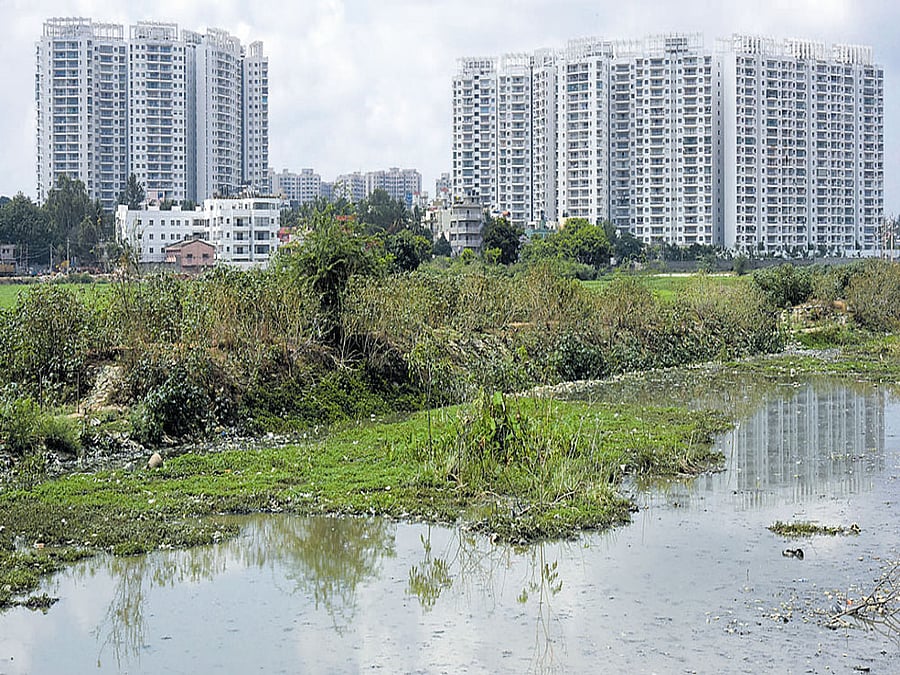12 Indian fish species on verge of extinction in Bengaluru lakes
Last Updated IST

The study focuses on relation between the aquatic life and climate change. Dr M Ramachandra Mohan, HoD, Department of Zoology, is conducting the study along with a few of his PhD students. DH file photo for representation
As many as 12 indigenous Indian species of fishes found in city lakes face the danger of going extinct in a few years due to increasing pollution and climate change, says an ongoing study by a team of researchers from the Bangalore University.
The study focuses on relation between the aquatic life and climate change. Dr M Ramachandra Mohan, HoD, Department of Zoology, is conducting the study along with a few of his PhD students.
The team studied fish life in 10 lakes between Bengaluru and Melekote (in Doddaballapur taluk of Bengaluru rural district). “The vulnerability of fish in Bengaluru lakes has increased manifold in the last five years,” Mohan, who is studying fish and other aquatic life in Bengaluru for the past 15 years, said.
The 12 species endangered include the Karnataka Labeo (Labeo Calbasu) and Indian Glassy fish (Pseudambassis Ranga) to name a few.
“Of the 12 species, five are under the vulnerable category and the rest are endangered. Two foreign species are also in danger,” said Mohan.
In Karnataka, 201 freshwater fish species have been found. Of these, 40 fish species are under threat and urgent conservation measures are needed to be implemented to ensure their survival, says the study.
It goes on to say that the native freshwater fish diversity in water bodies is declining rapidly. The crucial reason for the decline are the destruction of habitat due to construction of dams and barrages, pollution and exploitative fishing practices. Climate change is generally causing the waters to warm as well as bringing changes to rainfall patterns, water levels, river flow and water chemistry.
The predominant presence of exotic species like Tilapia, Silver carps, Grass carps and African catfishes in rivers and reservoirs is because they can tolerate high pollution and static water levels.
“Despite this higher level of tolerance, neither the indigenous nor foreign varieties are able to sustain themselves in the 10 lakes which were part of the study. Agricultural pollution and destruction of lakes due to agricultural and layout encroachments are other major problems,” said Mohan.
The study focuses on relation between the aquatic life and climate change. Dr M Ramachandra Mohan, HoD, Department of Zoology, is conducting the study along with a few of his PhD students.
The team studied fish life in 10 lakes between Bengaluru and Melekote (in Doddaballapur taluk of Bengaluru rural district). “The vulnerability of fish in Bengaluru lakes has increased manifold in the last five years,” Mohan, who is studying fish and other aquatic life in Bengaluru for the past 15 years, said.
The 12 species endangered include the Karnataka Labeo (Labeo Calbasu) and Indian Glassy fish (Pseudambassis Ranga) to name a few.
“Of the 12 species, five are under the vulnerable category and the rest are endangered. Two foreign species are also in danger,” said Mohan.
In Karnataka, 201 freshwater fish species have been found. Of these, 40 fish species are under threat and urgent conservation measures are needed to be implemented to ensure their survival, says the study.
It goes on to say that the native freshwater fish diversity in water bodies is declining rapidly. The crucial reason for the decline are the destruction of habitat due to construction of dams and barrages, pollution and exploitative fishing practices. Climate change is generally causing the waters to warm as well as bringing changes to rainfall patterns, water levels, river flow and water chemistry.
The predominant presence of exotic species like Tilapia, Silver carps, Grass carps and African catfishes in rivers and reservoirs is because they can tolerate high pollution and static water levels.
“Despite this higher level of tolerance, neither the indigenous nor foreign varieties are able to sustain themselves in the 10 lakes which were part of the study. Agricultural pollution and destruction of lakes due to agricultural and layout encroachments are other major problems,” said Mohan.
